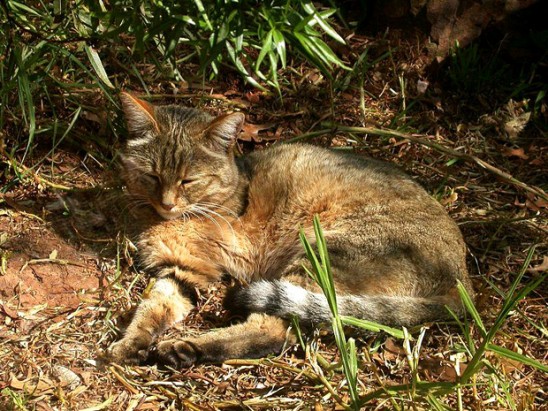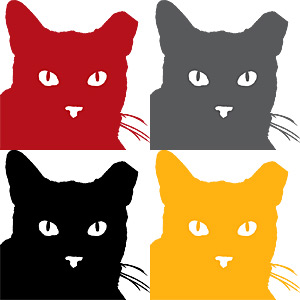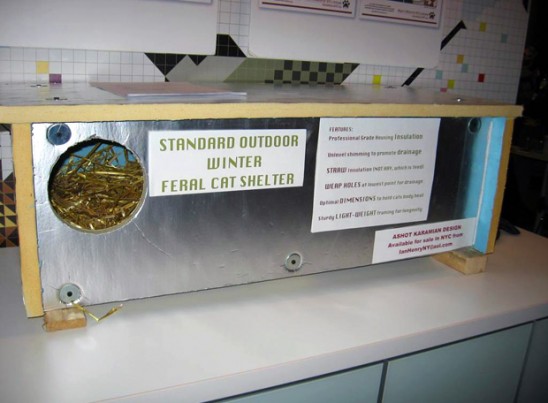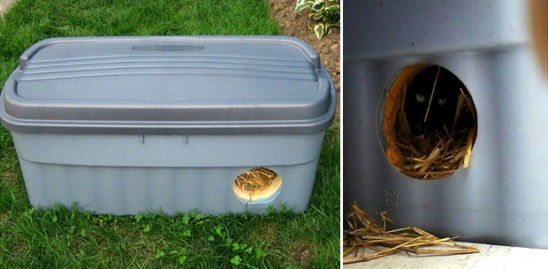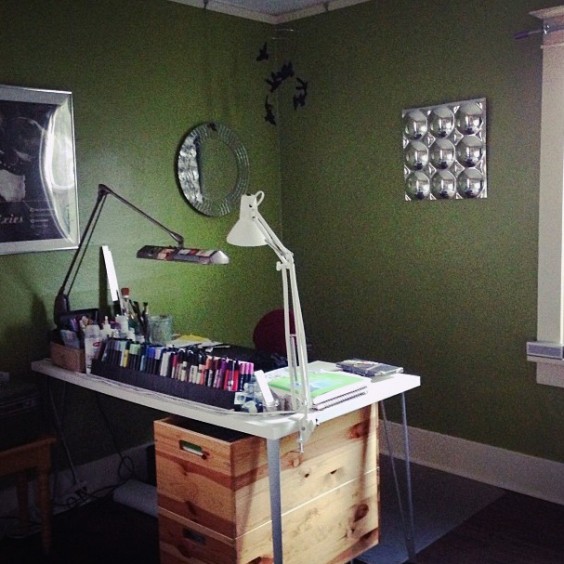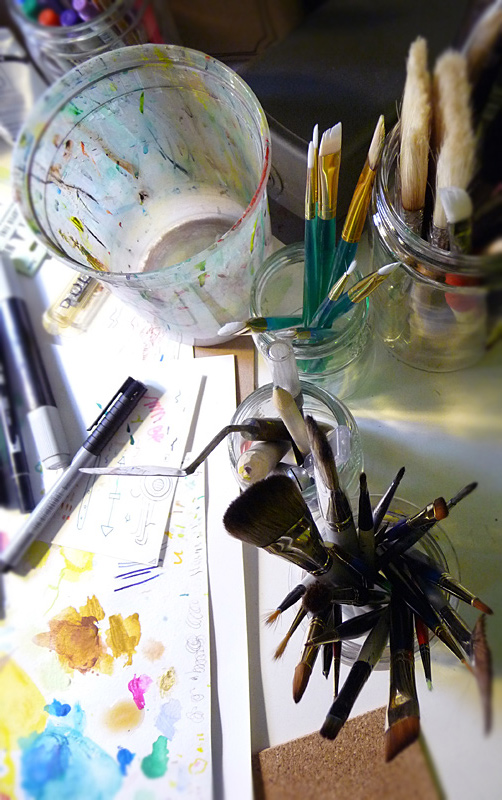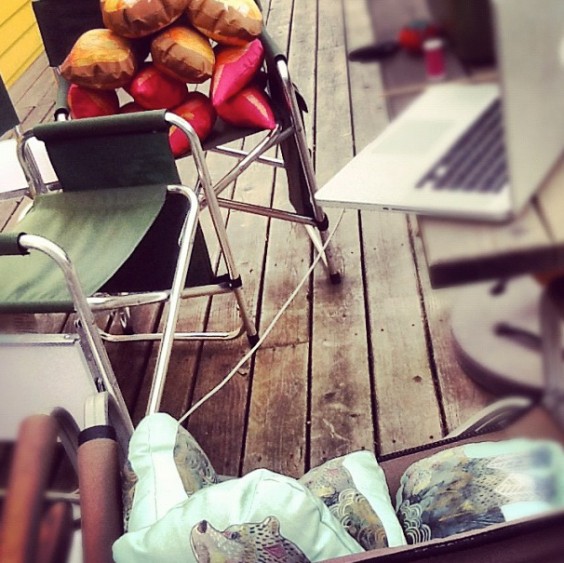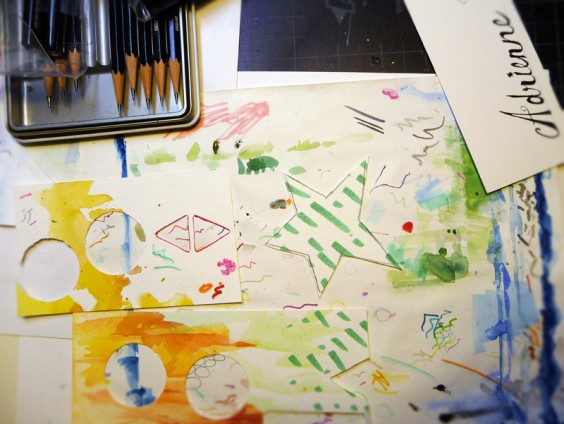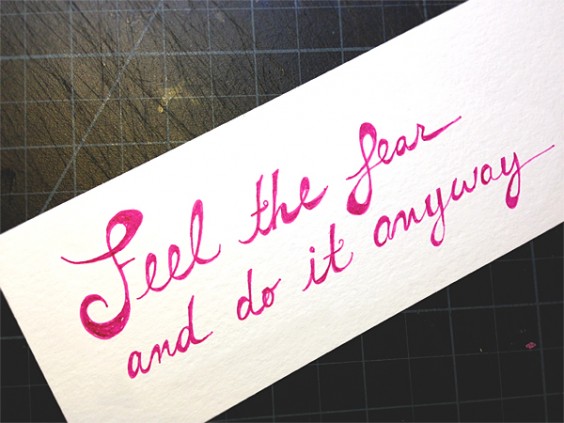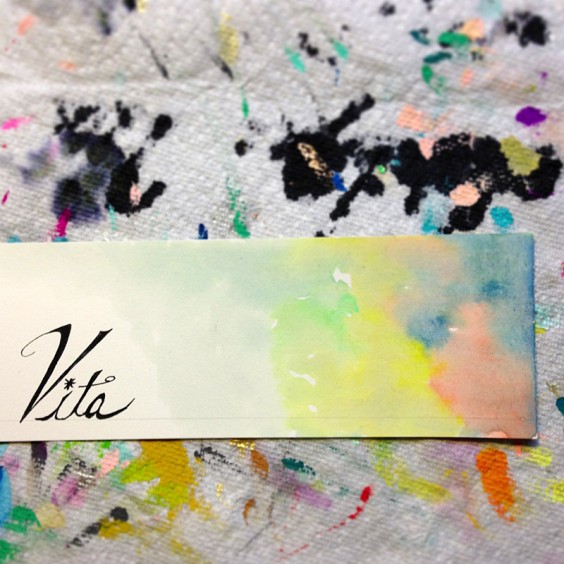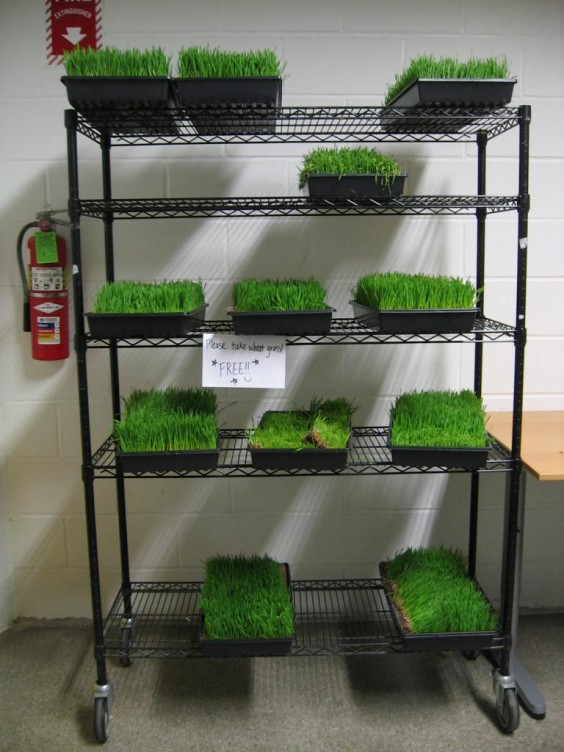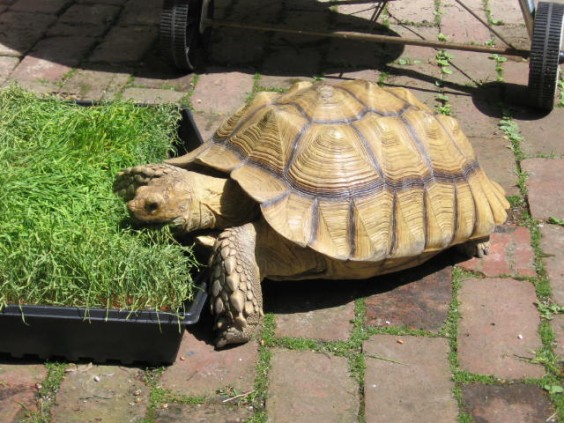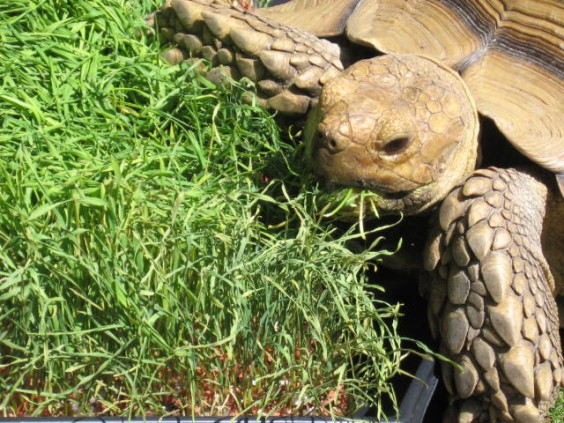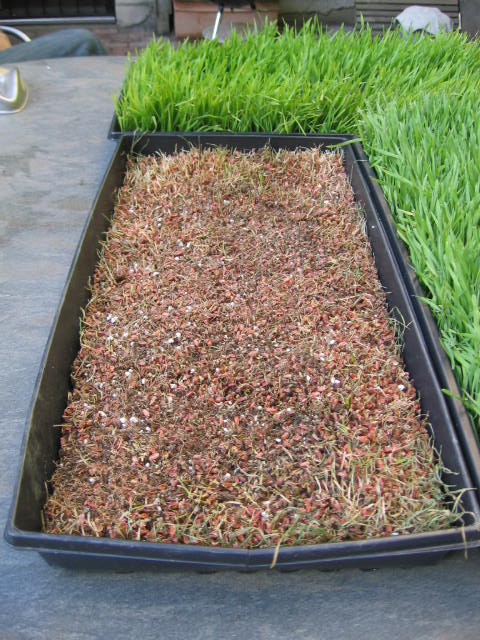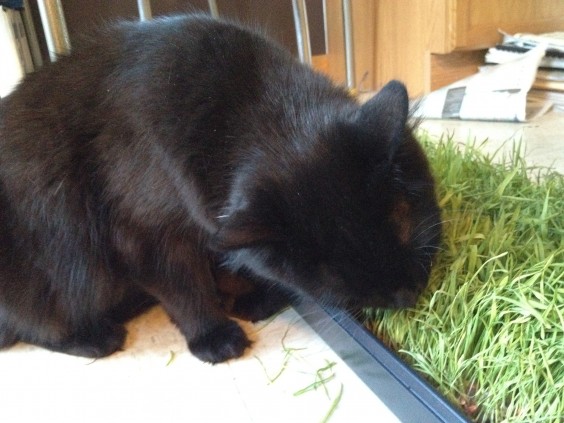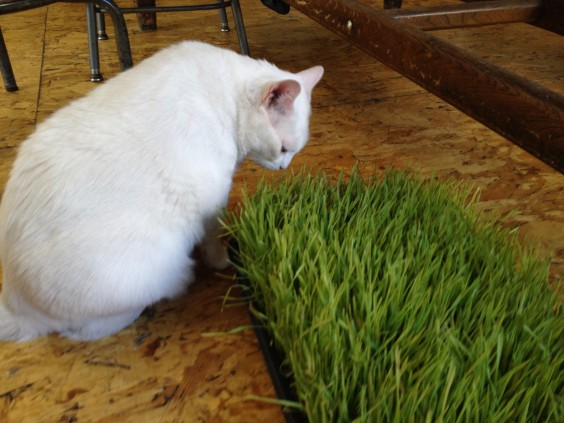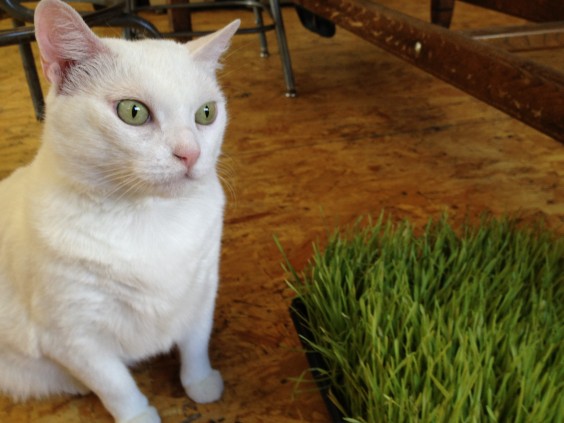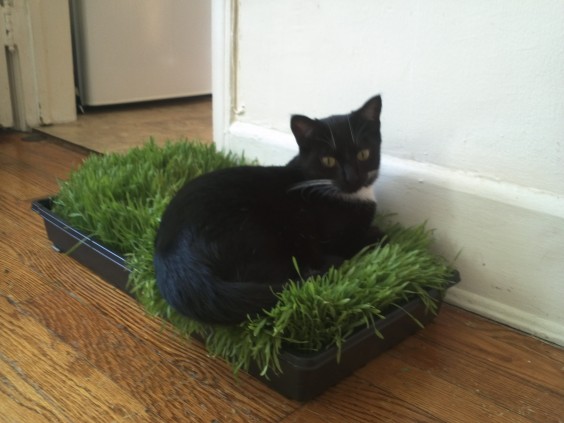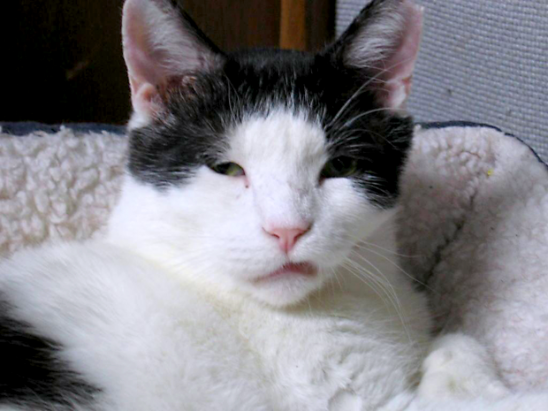
My cat Eddie thinking about cats who lack a nice warm bed like his
If you love cats–as we do–it’s painful to think of them having to brave the elements on their own during a freezing northern winter, especially this year. But here in New York City, tens if not hundreds of thousands of cats have no shelter. So, if you also love creative design, and believe in its potential as a force for good–as we do–it’s nice to learn about Architects for Animals’ “Giving Shelter,” a yearly funds-and awareness-raising initiative founded by animal lover Leslie Farrell.
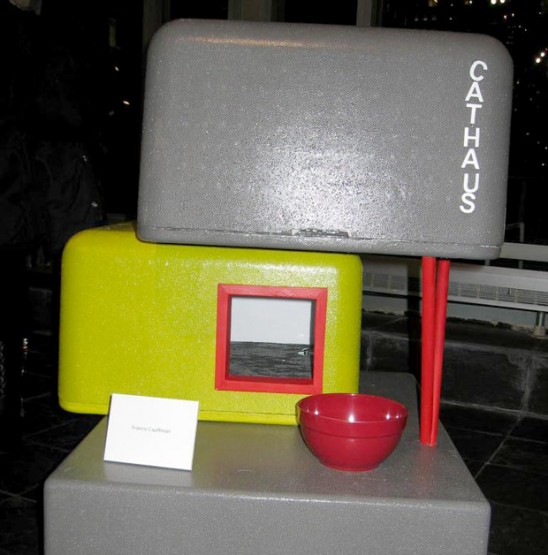
“CatHaus” by Francis Cauffman Architects was voted the favorite of the 2014 attendees
Since 2010, every year, Farrell, Director of Client Development at architecture firm Francis Cauffman, has convinced a handful of top-notch architectural design firms to design, build and donate innovative outdoor winter shelters for homeless cats. Their creations are put on public display as a one-night benefit event for the Mayor’s Alliance for NewYork City’s Animals. Attendees vote for their favorite, then all the shelters are donated to caregivers who work with needy animals.
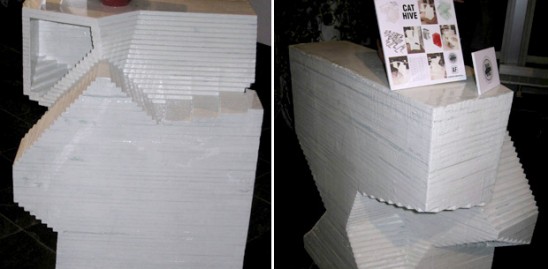
“Cat Hive” by Incorporated Architecture & Design
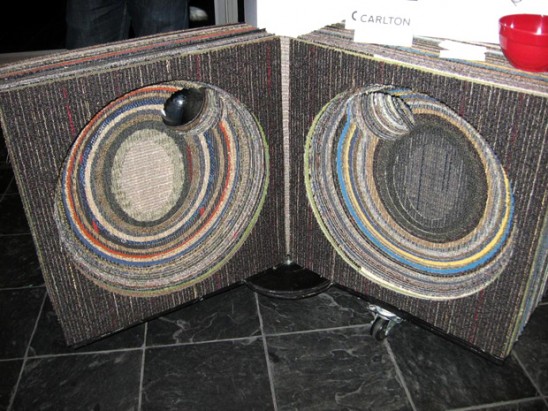
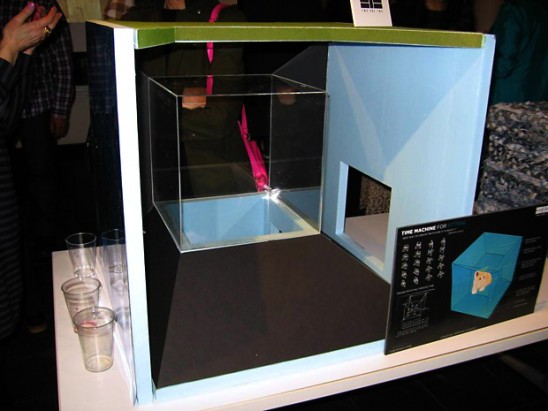
“Time Machine for Kittens,” by Two One Two Design
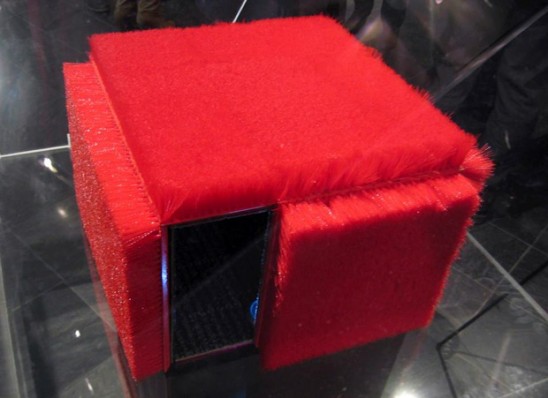
“Hairball,” by M Moser Associates
The creative designs of these shelters help the cause architecturally (they generate good ideas for future shelters) and in other ways, too, as Michael Phillips, Community Outreach Coordinator of the New York City Feral Cat Initiative, a program of the Mayor’s Alliance, points out. “The media coverage with pictures of the flashy shelters is an eye-catcher that many people examine with interest, whereas they will skip over an article about the plight of cats abandoned to the streets through no fault of their own.”
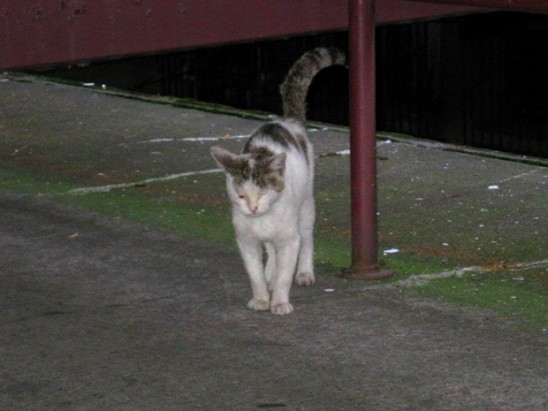
Homeless cat in Brooklyn (rescued and adopted a few days after this photo was taken)
Nobody knows how many homeless cats there are in NYC, but estimates range from tens of thousands up to a million. Most of them are scared of us, so they keep out of sight, which makes counting them difficult. While people often think of cats as natural loners, they actually tend to form colonies near food sources such as garbage bins near apartment buildings. Some feral moms could very well be teaching their kittens to scrounge your leftovers as you sleep. (I’ve witnessed this, a sight both adorable and sad.)
African Wild Cat at the Johannesburg Zoo, South Africa. Photo: Sonelle
These felines are all trying to survive in what, for them, is an unnatural habitat. It’s not just that it’s so urban and industrial, but also that they’re not native to this part of the world. All of the world’s domestic cats are descended from a type of wildcat that lives in the deserts of the Near East. These cats are not designed to live in the NYC climate; those pretty fur coats are not enough protection during the winter, no matter how thick they get.
They need our help, especially as it’s humans’ fault that they’re out there in the first place. This population is made up of of strays, who are lost or abandoned tame pet cats (some of whom have regressed to a not-so-tame state), and ferals, the essentially wild (that is, not socialized to humans) offspring and descendants of non-neutered strays and pets who were allowed to roam. They have neither a consistent and healthy food source, nor shelter from the elements, nor protection from urban dangers such as cars, rat and other poisons, and cruel humans.
New York Feral Cat Initiative logo
Fortunately, there are many (though never enough) animal-lovers all over NYC who work hard to rescue tame, adoptable cats and kittens, and feed and protect the ferals. The New York City Feral Cat Initiative is a coalition of more than 150 animal rescue groups and shelters whose joint mission is “to raise awareness about the thousands of… community cats living outdoors throughout NYC’s five boroughs, to offer solutions to prevent the number of homeless cats from increasing, and to successfully manage existing colonies.”
Standard outdoor cat winter shelter design by Ashot Karamian
Building shelters that enable these critters to avoid freezing misery or death during inclement weather is part of the last part, managing colonies. (To read about solutions to prevent increases in the number of homeless cats, start here.) Of course, it’s not really necessary to build shelters that are more than just functional. As far as we know, cats aren’t offended by a styrofoam-and-duct-tape aesthetic. Phillips described the minimal structural guidelines as follows: “No heavier than two people can lift easily. Inner space should be no higher than 16 inches to retain the body heat of the cats with room for straw bedding.Waterproof. Constructed with weatherproof construction materials.” He added, “Water is the most destructive force. Snow does not normally damage shelters or enter shelters in comparison to driving rain or flooding.”
Rubbermaid container cat shelter by by Ashot Karamian (photo by Ashot Karmanian used with permission)
“You could use a basic Rubbermaid container for a cat shelter, which is quite common and perfectly fine because it works,” says architect Sofia Zimmerman, who, along with her husband and business partner, Adam, has participated in Architects for Animals: Giving Shelter three years in a row. “But as designers,”she continues, “we love the idea of someone walking down the street and coming across something that is artful, unusual, or even beautiful. Cat shelters are often found in alleyways, parking lots, and other places where finding something delightful is rare. But here’s a chance to do something nice looking–for the cats, their caregivers, and the people that might catch a glimpse.”
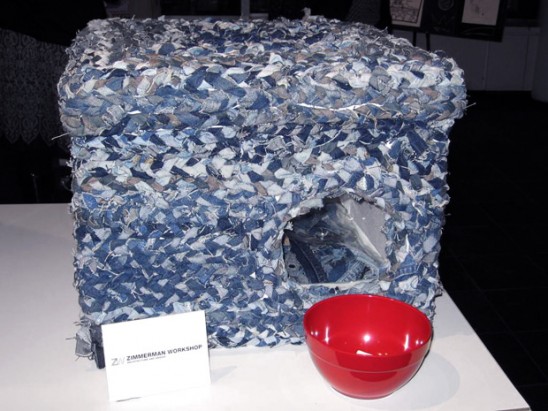
by Zimmerman Workshop Architecture + Design
“This third one, that we did this year, is perhaps the simplest, but in many ways our favorite. It was all about upcycling. We re-used a cardboard box and sealed it with duct tape. Inside, we lined it with styrofoam that came as packaging material for a lamp. And then we had to add another layer of insulation. This was the chance to do something delightful! We collected nine pairs of old jeans, cut them into long strips, and created a very very long braid. We wrapped it around and around the box, using as inspiration braided rag rugs–the ones you see in storybooks all the time with cats curled up on them!”
She adds that “During that process, we actually learned about the environmental impact associated with creating a pair of jeans….don’t get us started!”

“Fiberglass Pod,” by Elham Valipay and Haleh Atabaki, co-founders of MishMish, an example of a structure built with camouflage in mind
Different situations may call for specific architectural strategies. Phillips describes varying and “colony needs,” such as “camouflage; difficult specific dimensions to fit an exact spot; or fitting in visually with the design of a building nearby to please a particular property owner willing but not thrilled to have shelters placed on his property.”
If you want to help feral cats where you live, Phillips says, “Offering of your time to assist a local caretaker in your neighborhood is the best way to contribute to the long-term welfare of a community cat colony. The more widespread the support in a neighborhood the more likely the cats will accepted. Volunteering to feed the colony one or more days a week is a great help, when so often only one or two people shoulder the care for an entire colony.“
Or, if you’re crafty and love the idea of experimenting with small-scale architectural design that will actually be used, here’s your chance to do it, fur real! (sorry…)
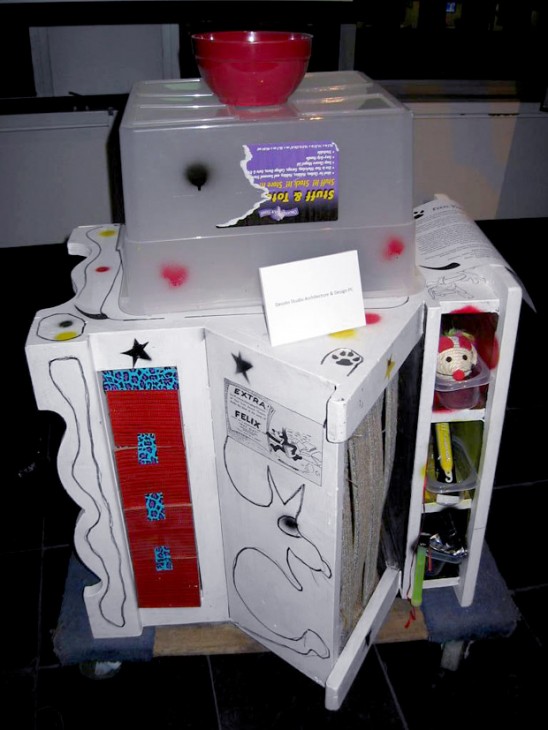
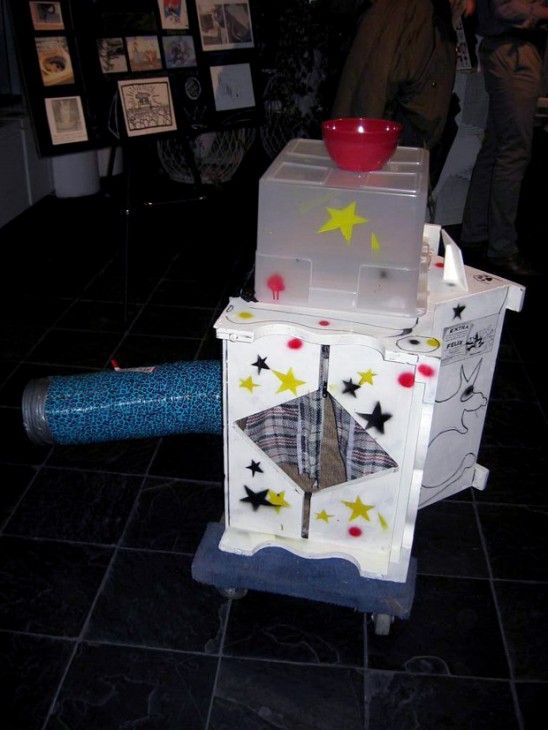
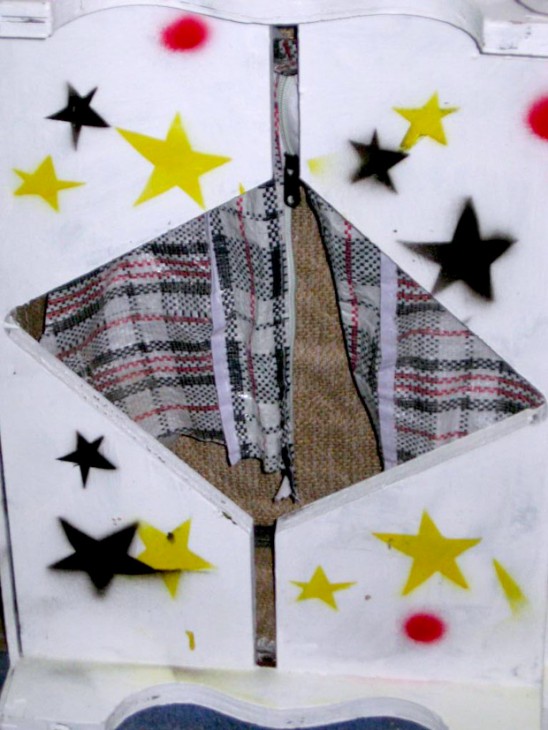
Above three photos: “Feral Vernacular” by deSoto studio architecture + design
All photos copyright Marisa Bowe, unless otherwise indicated.

